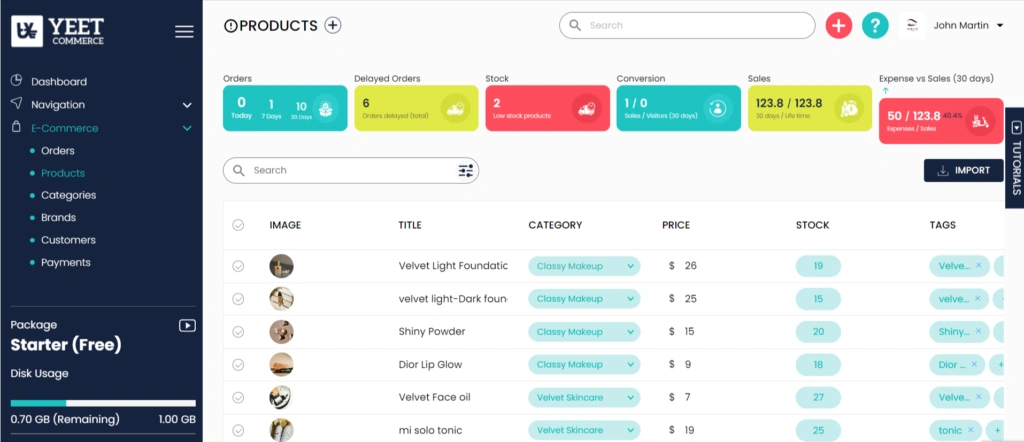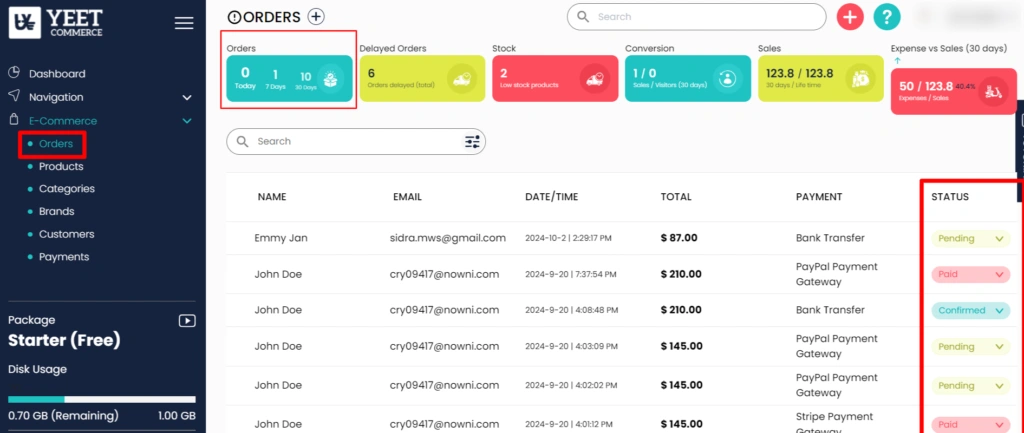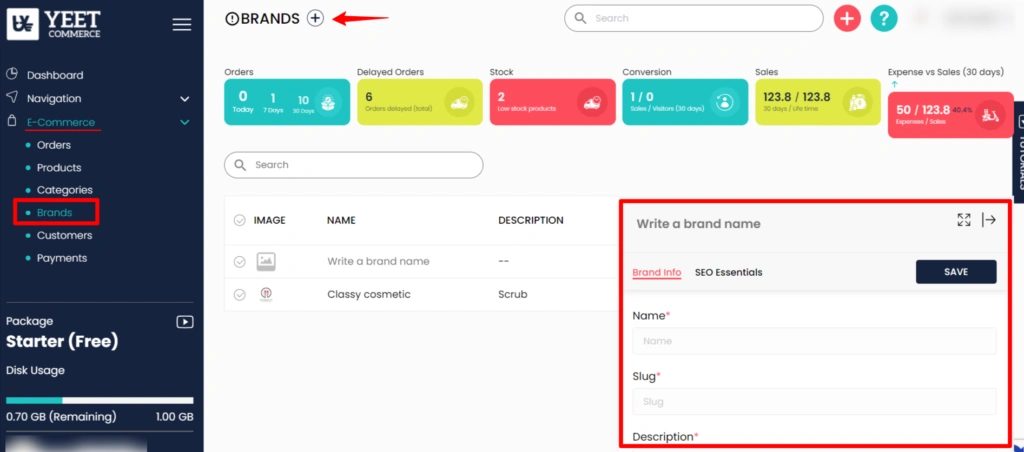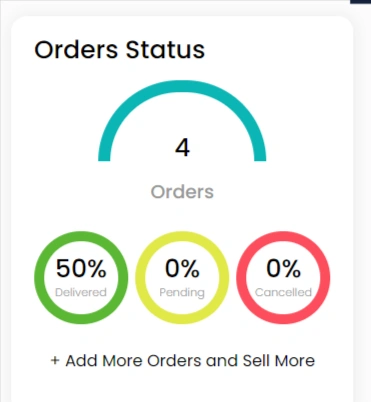E-commerce Inventory Management: A step by step guide
Efficient inventory management is the backbone of a successful eCommerce business. It’s more than just counting products; it’s about ensuring that you have the right items in the right quantities at the right time to meet customer demand. Poor inventory management can lead to stockouts, overstocking, and ultimately, lost sales and customer dissatisfaction.
This comprehensive guide will delve into the intricacies of eCommerce inventory management, providing you with a step-by-step approach to optimize your operations. We’ll explore key concepts, best practices, and tools to help you streamline your processes and achieve your business goals.
What is eCommerce Inventory Management and Why It Matters
When you think about running an online store, what pops into your mind? Is it the flashy website, the catchy marketing slogans, or perhaps the thrill of closing a sale? While all these elements are essential, one crucial aspect often gets overlooked: eCommerce inventory management. You might be wondering, what exactly is it, and why should you care? Let’s dive in!
eCommerce inventory management refers to the process of overseeing and controlling the inventory that your online business sells. It involves tracking products, managing stock levels, and ensuring you have the right amount of items available at all times. Effective inventory management is vital for ensuring that your business runs smoothly and that you can meet customer demands without a hitch.
So, why does this matter to you? Picture this: You’ve just launched an exciting new product, and your marketing team is buzzing with excitement. But when customers flock to your site, they find the item is sold out. What a letdown! Not only does this lead to lost sales, but it can also damage your brand’s reputation. You definitely don’t want that, right? This is where good eCommerce inventory management comes into play.
The Importance of Accurate Tracking
Accurate tracking of your inventory is truly the backbone of a successful eCommerce business. Specifically, you need to know what you have on hand, what’s selling well, and what’s just gathering dust. For instance, imagine running a cozy bookstore. If you have ten copies of a bestselling novel and only one copy of a niche title, you need to know this to avoid stocking issues. Ultimately, good eCommerce inventory management helps you maintain this balance.
Moreover, by utilizing inventory management software, you can automate the tracking process, making it easier to monitor stock levels. As a result, you’ll receive alerts when items are running low, helping you reorder before they run out. This proactive approach not only ensures your customers find what they’re looking for, but it also keeps them happy and loyal. And we all know that happy customers lead to repeat business!
Streamlining Your Supply Chain
Another key aspect of eCommerce inventory management is streamlining your supply chain. Indeed, you want your products to move smoothly from suppliers to your warehouse, and finally to your customers. In this context, effective inventory management allows you to coordinate this process seamlessly. Consequently, you’ll have the tools to analyze sales trends and anticipate demand, enabling you to adjust your orders accordingly.
For example, let’s say you sell trendy apparel. By keeping an eye on which items are flying off the shelves, you can communicate with your suppliers to stock up on those bestsellers. Conversely, if you notice certain items aren’t performing as expected, you can adjust your orders to avoid excess inventory. Ultimately, this agility is crucial in a fast-paced eCommerce environment where customer preferences can change overnight..
Reducing Costs and Improving Efficiency
You might be thinking, “All this sounds great, but what about costs?” Well, here’s the good news: effective eCommerce inventory management can actually save you money! Specifically, by preventing overstocking, you minimize storage costs and reduce the risk of unsold inventory. Moreover, when you optimize your stock levels, you can make better use of your resources and improve overall efficiency.
Now, consider the implications of having excess inventory. Not only does it take up valuable space, but it can also lead to markdowns and discounted sales, which ultimately eat into your profit margins. On the other hand, having too little inventory can result in missed sales opportunities. Therefore, with proper eCommerce inventory management, you strike the perfect balance, ensuring that you always have what your customers want while also keeping costs manageable.
The Role of Inventory in eCommerce Success
When it comes to running a successful online store, one element stands out: inventory. Think of your shop as a vibrant marketplace, bustling with customers eager to purchase. However, if your shelves are bare, customers will leave disappointed. This is exactly where effective eCommerce inventory management becomes essential.
In essence, good inventory management is about ensuring the right products are available at the right time. As a result, it helps you meet customer demand while preventing stockouts. When you manage your inventory well, you enhance customer satisfaction, which is critical for repeat business. Ultimately, happy customers are likely to return, boosting your sales and reputation.
Furthermore, eCommerce inventory management allows you to analyze sales trends. By understanding what products are hot and which ones are not, you can optimize your stock. For instance, if you sell trendy gadgets and notice a surge in demand for a specific item, you can adjust your orders accordingly. Consequently, this insight not only saves you money but also keeps your customers thrilled to find what they want.
How YeetCommerce Makes Inventory Management Easy
Now that you understand the importance of inventory, let’s talk about how YeetCommerce simplifies eCommerce inventory management. This platform takes the guesswork out of managing your stock, making your life much easier.
First off, YeetCommerce offers user-friendly inventory management tools. You don’t need to be a tech wizard to navigate its features. With a few clicks, you can view your entire inventory, track stock levels, and manage orders. Everything is laid out clearly, allowing you to focus on growing your business rather than stressing over inventory counts.
Another fantastic feature is the automation capabilities. YeetCommerce allows you to set up automatic stock alerts. When inventory levels dip below a certain point, you’ll receive notifications to reorder. This proactive approach ensures you never run out of popular items, keeping your customers satisfied and your sales flowing.
1. E-Commerce Integration
The foundation of any successful eCommerce business lies in seamless integration between your online store and inventory management system. This step involves syncing your eCommerce platform YeetCommerce—with inventory management software to ensure real-time updates on stock levels, sales, and product availability. A robust integration prevents discrepancies between what customers see and what’s actually in stock, avoiding overselling or stockouts.

Key Benefits:
- Real-time stock updates to prevent overselling.
- Synchronization across multiple sales channels (e.g., website, social media).
- Automated processes like stock adjustments and reorder notifications.
2. Orders

Managing orders efficiently is critical to the success of inventory management. Once a customer places an order, the system should automatically adjust stock levels, initiate order processing, and track fulfillment. Clear workflows reduce delays and ensure you can handle a high volume of orders without bottlenecks.
Key Actions:
- Automate stock updates when orders are placed.
- Ensure accurate tracking for on-time deliveries.
- Analyze order patterns to optimize inventory forecasting.
3. Products

Product management revolves around tracking every item in your inventory, from product details to variations like size, color, and material. An organized product system ensures that customers get the correct information and helps prevent stockouts or surplus of popular items.
Key Tips:
- Maintain clear, detailed product descriptions and tags.
- Use AI to write product or category descriptions faster and consistently.
- Monitor sales trends to adjust stock levels for high-demand products.
AI-Generated Product & Category Descriptions

Leverage AI tools to generate SEO-optimized product descriptions in seconds. This reduces the time spent manually writing descriptions and ensures uniformity across your store. Simply input product details, and AI generates a polished description, which can be fine-tuned to meet your brand voice and target keywords.
Example:
Product: Classic Leather Jacket
“Upgrade your style with our premium leather jacket. Crafted from genuine leather, it features a sleek design with a modern fit, perfect for casual or formal settings.”
4. Categories

Properly categorizing products not only improves customer navigation but also helps you manage stock levels more effectively. Categories allow for logical grouping of products (e.g., “Men’s Shoes,” “Home Appliances”), which streamlines backend management and enhances SEO, as well as product discovery for users.
Key Actions:
- Create intuitive categories (e.g., “Women’s Footwear,” “Outdoor Equipment”).
- Add subcategories for refined product organization (e.g., “Women’s Running Shoes”).
- Conduct regular audits to ensure accurate product categorization.
5. Brands

For stores selling multiple brands, managing inventory by brand helps monitor performance and adjust stock levels accordingly. This is useful for analyzing sales data, identifying top-performing brands, and making decisions on product lines that may need marketing adjustments.
Key Benefits:
- Track brand-specific performance to optimize inventory decisions.
- Adjust marketing strategies based on brand popularity.
- Strengthen relationships with suppliers by consistently meeting demand.
6. Customers
Knowing your customers’ buying habits is key to efficient inventory management. By segmenting customers based on their purchasing behavior, demographics, or location, you can forecast demand and adjust stock levels accordingly. Customer data helps predict which products are in high demand and which might need to be restocked.
Key Actions:
- Analyze customer data to forecast demand and manage stock.
- Offer personalized product recommendations to boost sales.
- Adjust inventory based on seasonal or location-specific customer needs.
7. Payments
Payment management is integral to your inventory strategy. Efficient payment processing directly impacts cash flow, allowing you to reinvest in stock as needed. Integrating your payment gateway with your inventory system ensures order confirmations and refunds are reflected accurately in stock levels.
Key Tips:
- Sync payment gateways (e.g., PayPal, Stripe) with inventory tools for real-time updates.
- Track payments and cash flow to adjust stock purchasing.
- Manage refunds and exchanges efficiently to maintain accurate inventory.
8. Shipping
Firstly, shipping is the final step in the inventory management process. Once an order is processed, it’s vital that shipping workflows are seamlessly integrated with your inventory software. This way, it ensures that stock is updated as products are shipped and customers are informed of delivery statuses. Additionally, a smooth shipping process helps reduce manual errors and ultimately improves overall customer satisfaction.
Key Actions:
- Automate shipping updates to reduce manual input.
- Use shipping data to anticipate future stock needs.
- Optimize packaging and logistics to minimize costs and improve delivery times.
Step-by-Step Process for Organizing Your Stock
Getting your inventory organized doesn’t have to be a daunting task. Here’s a simple step-by-step process to help you get started with eCommerce inventory management.
Getting Started: Accessing Your YeetCommerce Dashboard
- Navigate to YeetCommerce.com: Access your online store’s control panel.
- Login using your credentials to unleash the power of product management.
- Plus Sign Power: Locate the “+” icon in the top right corner – your gateway to adding products and categories.
Building a Strong Foundation with Effective Categories
- Add New Category: From the options presented, select “Add New Category.” It’s advisable to create product categories before adding specific products for better organization.
- Category Details: In the category creation form, start by typing the category name, such as “Jackets.” Next, create a unique identifier called a slug, for example, “women-jacket.” Specify whether the category is a main category or a subcategory.
- Category Description and Image: Write a short but descriptive overview of the category, like “Find stylish and comfy jackets for any occasion in our ‘Jackets’ collection.” Additionally, upload an image that represents the category well.
SEO Essentials: Optimizing for Search Success
Maximize your store’s visibility and attract more customers by optimizing your product listings for search engines.
- Leverage YeetCommerce’s SEO Tools: Utilize built-in features to enhance your product’s discoverability on platforms like Google.
- Captivating Titles: Craft compelling titles that entice potential buyers to click (e.g., “The Perfect Women’s Dress for Every Occasion”).
- Descriptive Delight: Write informative product descriptions that showcase features and benefits, helping customers find the perfect fit.
Congratulations! You’ve Mastered Categories
You’ve successfully created your first product category! Repeat this process to establish a well-organized structure for your entire store.your products should have clear categories and subcategories. This makes it easier for customers to navigate and find what they’re looking for.
Now, your product category is set up and ready to showcase your jackets collection!
Adding a New Product to an Existing Category
Yeetcommerce Dashboard : Product Management
1. Access Product Addition Interface: Click on the plus icon again and this time select “Add New Product.”
2. Complete Product Details Form: Fill out the product creation form with the following details:
- Product Name: Enter a descriptive name like “Puffer Jacket.”
- Product Description: Craft a brief yet informative description highlighting the key features.
- Slug: Create a unique identifier for the product.
- Detailed Product Description: Provide a comprehensive description for better customer understanding.
- Category Selection: Choose the relevant category, in this case, “Jackets.”
- Optional Brand Addition: Add the brand if applicable.
- Images and Videos: Upload high-quality visuals of the product, including multiple images if needed.
- Product Tags: Enhance searchability by adding relevant product tags.
- Featured Product Option: Decide whether to showcase the product on the homepage.
- Product Variables: If applicable, create product variations such as sizes (small, medium, large).
3. Pricing and SEO Elements: Proceed to input pricing details and optimize SEO elements for better visibility.
4. Preview and Finalize: Click to preview how your product appears on the shop page. Once satisfied, save and publish your product.
Congratulations! Your new product is now successfully added to your store’s “Jackets” category. Repeat these steps to effortlessly add more products and enhance your online store’s offerings.
Step 1: Categorize Your Products
Begin by categorizing your products. Think of it as setting up sections in your store. For instance, if you sell home goods, you could create categories like “Kitchen,” “Living Room,” and “Bedroom.” This organization not only makes it easier for you to find items but also helps customers navigate your online store.
Step 2: Implement an Inventory Management System
Next, make use of an inventory management system. With YeetCommerce, you have access to tools that help you track stock levels in real-time. This means you’ll always know what you have on hand and can make informed purchasing decisions.
Step 3: Set Minimum and Maximum Stock Levels
Determine the minimum and maximum stock levels for each product. Minimum levels help you avoid running out, while maximum levels prevent overstocking. By finding the right balance, you’ll keep your inventory efficient and your customers happy.
Step 4: Conduct Regular Audits
Schedule regular inventory audits to verify that your records match the actual stock. This practice helps you catch any discrepancies early, ensuring your inventory remains accurate. You could even turn audits into a fun team activity!
By following these steps, you’ll create an organized inventory system that enhances your overall eCommerce operations. Remember, a well-organized inventory is a key ingredient in your recipe for success.
Keeping Stock Levels Accurate with Real-Time Tracking
Real-time tracking not only allows you to monitor your inventory levels as they change throughout the day, but also provides a host of additional benefits. With YeetCommerce, for example, you can enjoy the advantages of real-time inventory tracking, making your life a lot easier.

In addition, real-time tracking provides alerts when stock levels drop below your predetermined thresholds. As a result, you can reorder products before they run out, ensuring you never disappoint a customer. Moreover, you’ll have access to valuable data that shows which products are selling well and which ones aren’t.
Another great aspect of real-time tracking is its seamless integration with your eCommerce platform. By syncing your inventory across all sales channels, you reduce the risk of overselling. Consequently, this means you can focus on marketing and customer engagement without worrying about stock discrepancies.
In summary, effective eCommerce inventory management is vital for your online success. By understanding the role of inventory, utilizing tools like YeetCommerce, and following a simple organizing process, you’ll be well on your way to thriving in the eCommerce landscape. With real-time tracking and efficient organization, you can turn inventory management from a headache into a breeze, allowing you to focus on what you do best: serving your customers!














![$banner__image_update['image']['alt']](https://yeetcommerce.com/wp-content/uploads/2025/03/how-to-connect-3-1-1.webp)